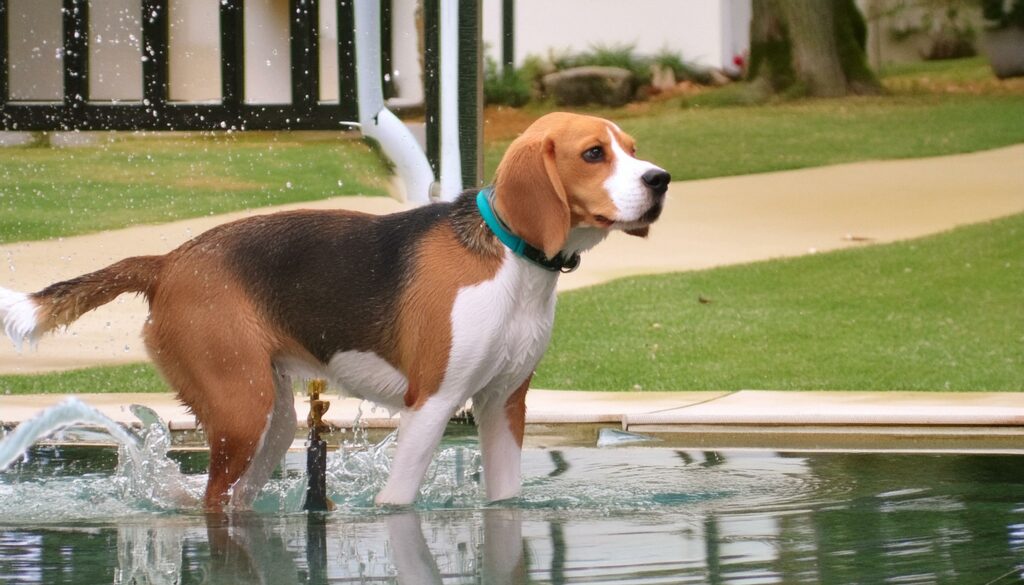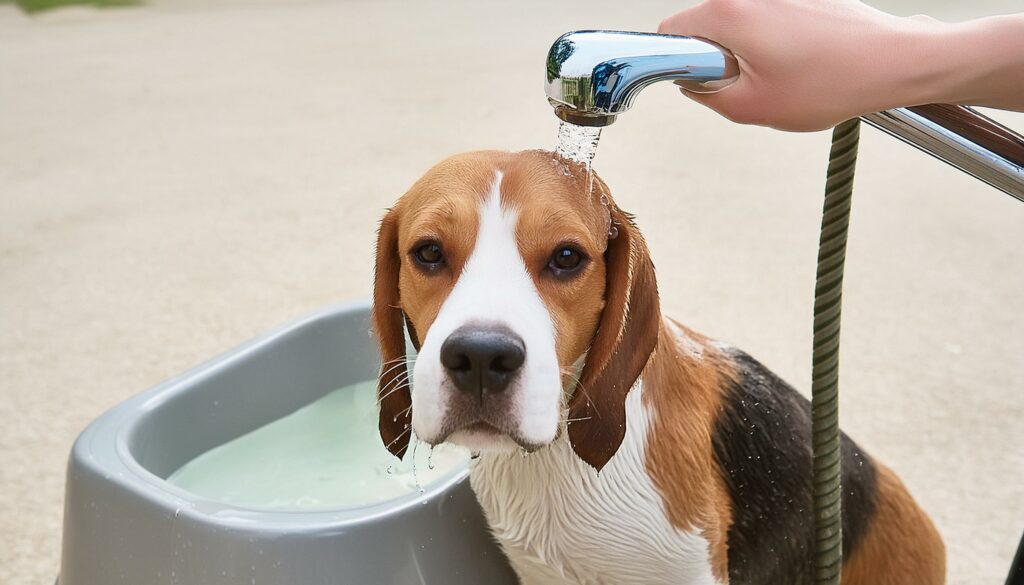Beagles, beloved for their friendly demeanor and expressive faces, often exhibit a curious aversion to water. While some dog breeds eagerly dive into lakes and pools, Beagles may hesitate or outright avoid aquatic environments. This article explores the various factors contributing to this behavior and offers insights into helping Beagles overcome their water aversion.
Ancestral Origins
Beagle’s Hunting Background
Beagles have a rich history as scent hounds, tracing back to their days as hunting companions. Their ancestors were prized for their exceptional tracking abilities, navigating dense forests and rugged terrain in pursuit of game. However, unlike breeds bred specifically for water-related tasks, Beagles were primarily terrestrial hunters, which may explain their reluctance towards water.
Influence on Water Aversion
The ancestral role of Beagles as land-based hunters likely influences their attitude towards water. Unlike retrievers bred to retrieve waterfowl or spaniels accustomed to water-based hunting, Beagles may lack the genetic predisposition or exposure to aquatic environments. Their focus remains on tracking scents and pursuing game on dry land rather than navigating through water.
Physical Characteristics
Anatomy Affecting Water Affinity
Beagles possess certain physical traits that can impact their affinity for water. Their short legs and sturdy build, while ideal for traversing rugged terrain, are not particularly suited for swimming. Additionally, their dense double coat, designed to provide insulation, may become waterlogged, weighing them down and causing discomfort.
Breeds Predisposed to Water
In contrast, breeds with specialized anatomical features for swimming, such as webbed feet and water-resistant coats, exhibit a natural affinity for water. Breeds like Labrador Retrievers and Newfoundlands excel in aquatic activities due to their physical adaptations, whereas Beagles may lack these specialized traits.
Early Experiences

Impact of Early Socialization
Early socialization plays a crucial role in shaping a Beagle’s relationship with water. Puppies exposed to positive experiences around water during their formative stages are more likely to develop a comfort and curiosity towards aquatic environments. Conversely, limited exposure or negative encounters may contribute to apprehension or fearfulness in adulthood.
Traumatic Events and Water Aversion
Traumatic incidents, such as near-drowning experiences or unexpected falls into water bodies, can leave a lasting impression on a Beagle’s psyche. These events may trigger fear responses, leading to aversion or avoidance behaviors towards water. It’s essential to approach water-related activities with sensitivity and patience, especially with Beagles who have experienced past traumas.
Temperamental Factors
Individual Personality Traits
Beagles, like humans, possess unique personality traits that influence their behavior. Some Beagles may exhibit a natural curiosity and fearlessness, while others may be more cautious or reserved. These individual differences play a significant role in how Beagles respond to water-related stimuli.
Fear and Anxiety Responses
Beagles prone to anxiety or fearfulness may exhibit heightened aversion to water-related stimuli. Loud noises, unfamiliar surroundings, or the sensation of being submerged can trigger distress in sensitive individuals. Creating a calm and supportive environment, free from potential stressors, can help alleviate their apprehensions and build positive associations with water.
Training Methods
Positive Reinforcement Techniques
Effective training strategies rely on positive reinforcement to encourage desired behaviors. When introducing Beagles to water, using treats, praise, and interactive play can incentivize exploration and build confidence. Patience and consistency are key, as gradual progress may be necessary to overcome initial reluctance.
Gradual Exposure to Water
Introducing Beagles to water gradually allows them to acclimate at their own pace. Starting with shallow puddles or calm streams and gradually progressing to deeper bodies of water can help build trust and confidence over time. Monitoring their comfort levels and providing reassurance throughout the process is essential for success.
Environmental Factors

Influence of Surroundings on Behavior
Environmental factors, such as the presence of other animals, weather conditions, and the accessibility of water sources, can influence a Beagle’s willingness to engage with water. Familiarizing them with safe and inviting environments increases their comfort and enjoyment during water-related activities.
Access to Water Sources
Providing Beagles with regular access to water sources enables them to explore and interact with water on their terms. Supervision is crucial to ensure their safety, particularly in unfamiliar settings or when encountering strong currents. Access to safe water sources encourages Beagles to develop positive associations with water.
Health Concerns
Ear Infections and Skin Conditions
Beagles are prone to ear infections and skin conditions exacerbated by moisture. Prolonged exposure to water can trap moisture in the ear canal, leading to bacterial growth and infections. Additionally, moisture can aggravate skin conditions, causing discomfort or allergic reactions. Proper grooming and preventive care are essential to maintain their health and well-being.
Alternative Activities
Engaging in Land-Based Exercises
While water activities may not be their preference, Beagles can enjoy a variety of land-based exercises and games. Activities such as hiking, jogging, or interactive play sessions provide physical stimulation and mental enrichment without the need for water involvement.
Mental Stimulation Indoors
Indoor activities offer Beagles opportunities for mental stimulation and bonding with their owners. Puzzle toys, scent games, and obedience training sessions provide outlets for their natural instincts and cognitive abilities. Engaging in indoor activities strengthens the bond between Beagles and their human companions.
Conclusion
Understanding why Beagles may not like water involves considering a combination of factors, including their ancestral origins, individual temperament, and past experiences. While some Beagles may never develop a fondness for aquatic activities, patient and supportive approaches can help alleviate fears and foster positive associations. By respecting their preferences and focusing on alternative forms of enrichment, owners can ensure fulfilling and enjoyable experiences for their beloved companions.
FAQs
Can all Beagles learn to enjoy water?
While some Beagles may eventually warm up to water with patience and training, individual preferences and experiences play a significant role in their attitudes towards aquatic activities.
Are there any health risks associated with water exposure for Beagles?
Beagles, particularly those prone to ear infections or skin conditions, may experience health issues exacerbated by moisture. Regular grooming and preventive measures can help mitigate these risks.
How can I help my Beagle overcome water aversion?
Gradual exposure, positive reinforcement, and professional guidance can aid in overcoming water aversion in Beagles. Patience, consistency, and a supportive environment are essential for success.
What should I do if my Beagle shows signs of distress near water?
If your Beagle exhibits signs of distress or discomfort near water, such as excessive panting or attempts to escape, remove them from the situation immediately and provide reassurance in a calm environment.
Can water aversion in Beagles be inherited?
While genetics may influence temperament and behavior to some extent, water aversion in Beagles is primarily shaped by individual experiences and environmental factors rather than hereditary traits.
